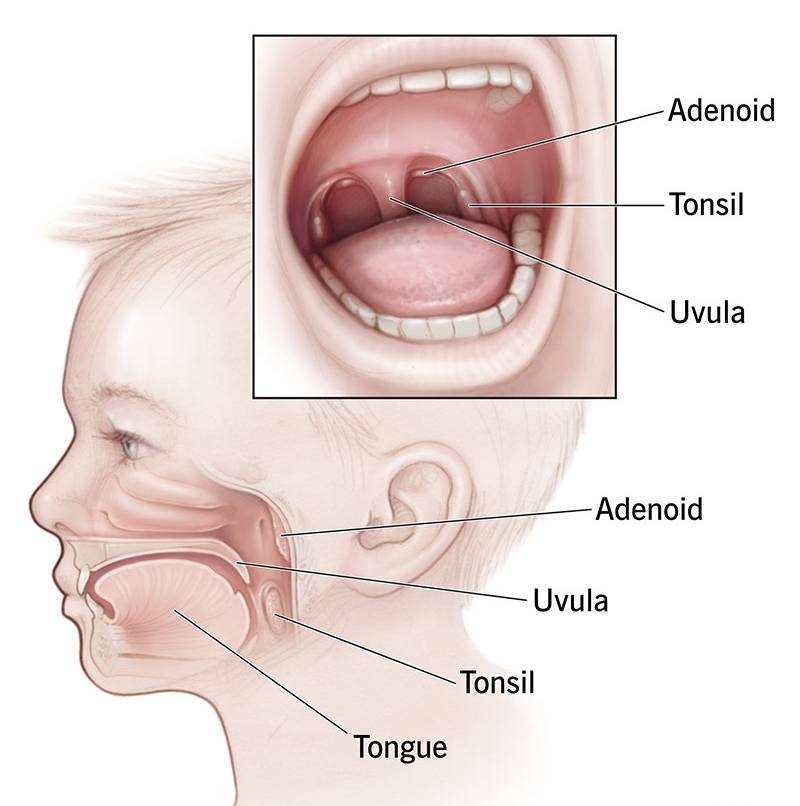Adenoids
Overview

Why it's done
Breathing Difficulties: Enlarged adenoids can obstruct the airways, leading to difficulties in breathing through the nose. Adenoid removal aims to improve airflow and alleviate respiratory issues.
Snoring and Sleep Apnea: Enlarged adenoids may contribute to snoring and sleep apnea in both children and adults. Adenoidectomy can help reduce or eliminate these sleep-related problems.
Recurrent Ear Infections: Adenoids are positioned close to the Eustachian tubes, and their enlargement or infection can contribute to frequent ear infections. Removal of adenoids may reduce the occurrence of ear infections.
Chronic Sinusitis: In some cases, chronic sinusitis may be linked to issues with adenoids. Adenoidectomy may be recommended to address chronic sinus problems.
Speech and Swallowing Difficulties: Enlarged adenoids might affect the function of the nearby structures in the throat, leading to speech and swallowing difficulties, particularly in children.
Facial Development: In rare cases, persistent enlargement of adenoids can impact facial development in children. Adenoidectomy may be recommended to prevent potential facial abnormalities.
Risk
- Bleeding
- Infection
- Anesthesia Risks
- Changes in Voice
- Nasal Regurgitation
- Rare Complications
How do I get ready for adenoids surgery?
Consultation with the Surgeon:
- Schedule a pre-operative consultation with the surgeon who will be performing the adenoidectomy.
- Discuss your medical history, current medications, and any allergies.
- Address any concerns or questions you may have about the procedure.
Pre-operative Testing:
- Your surgeon may order pre-operative tests, such as blood work or imaging, to ensure you are in good health for the surgery.
Medication Review:
- Discuss with your healthcare provider which medications you should continue taking and which ones you may need to temporarily stop before the surgery, especially blood-thinning medications.
Fasting:
- Follow the fasting instructions provided by your healthcare team. Typically, you will be instructed not to eat or drink anything for a certain period before the surgery.
Arrangements for Transportation:
- Since adenoidectomy is often performed under general anesthesia, make arrangements for someone to drive you home after the surgery.
Post-operative Care Planning:
- Prepare your home for the recovery period. Stock up on soft foods, such as soups and yogurt, as they may be easier to consume during the initial days following surgery.
- Arrange for someone to assist you at home, especially if you have young children who may need care during your recovery.
Clothing and Personal Items:
- Wear comfortable and loose-fitting clothing on the day of the surgery.
- Bring any necessary personal items, such as identification, insurance information, and a list of medications.
Follow Pre-operative Instructions:
- Adhere to any specific pre-operative instructions provided by your surgeon, such as showering with a special soap the night before or the morning of the surgery.
Mental Preparation:
- Take time to mentally prepare for the surgery. Understanding the procedure and having realistic expectations can help alleviate anxiety.
Post-operative Follow-up:
- Schedule any necessary post-operative follow-up appointments with your surgeon.


